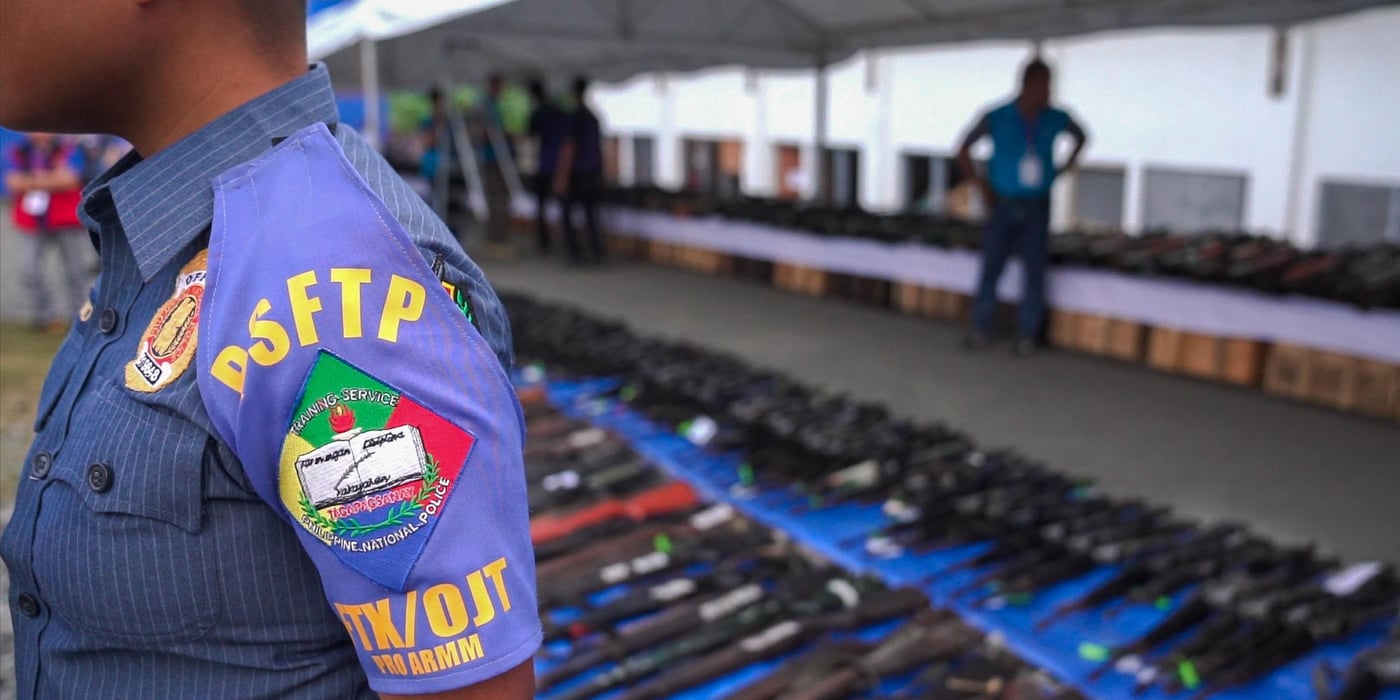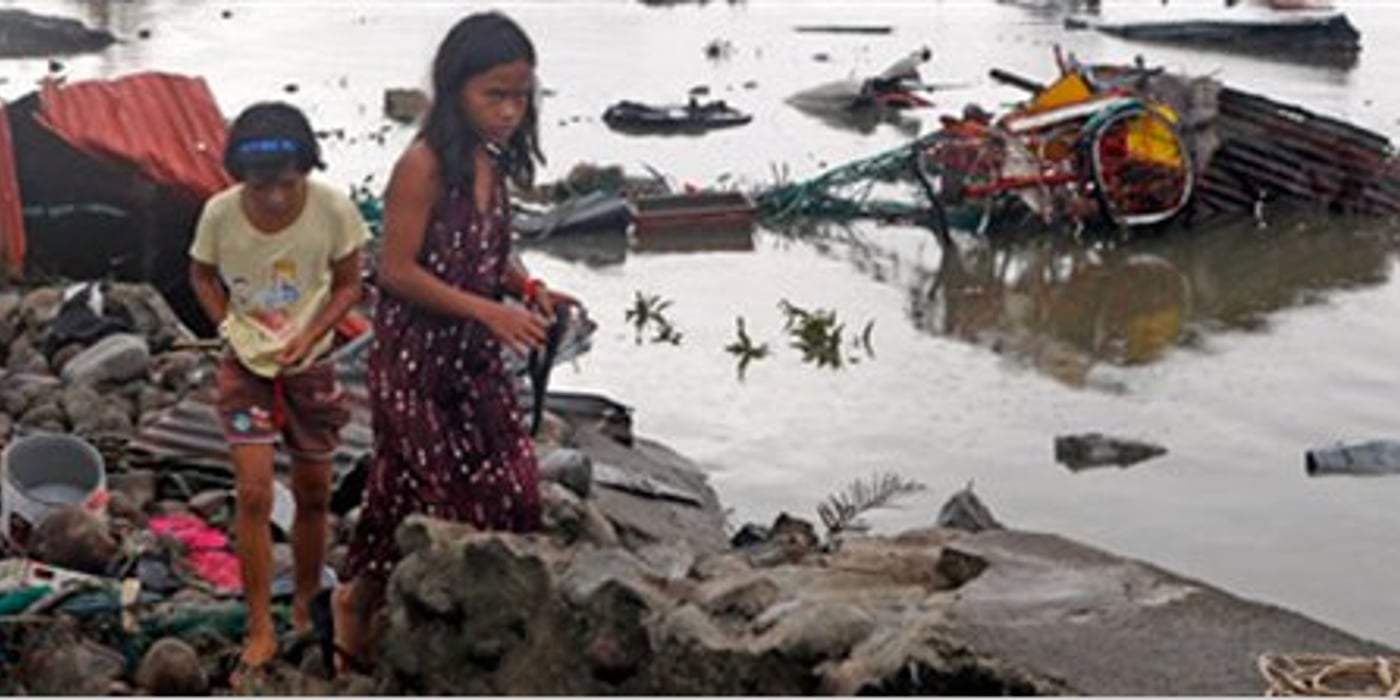Article previously published on www.norcapweb.no
The small town of Guiuan is located on a thin slice of land that stretches into the Pacific Ocean on the island of Samar in the eastern part of the Philippines. It was here Typhoon Hayian (known as Yolanda in the Philippines) first struck on 8 November 2013. Many lives were lost and houses and property was destroyed when strong winds and sea swell swept in. Around 50 schools collapsed in the three closest districts alone, while 161 schools and 1,343 classrooms were completely destroyed in the eastern part of the island. In East Samar alone, more than 35,000 children were without schooling after the typhoon.
“Because of the massive destruction, many of the school children were at risk of losing an entire year of education. By getting started quickly, we have ensured that students have the possibility to complete the school year and advance to the next grade,” says Eirik Grønvold.
School prevents trauma
Grønvold is a NORCAP education specialist with more than 20 years of experience as a teacher in Norway. In the last decade he has been on more than eight missions with NORCAP – to Sudan, Liberia, Chad and more. With financial support from private donors and organizations like the Union of Education Norway (Utdanningsforbundet) and The Norwegian Guide and Scout Association (Speiderforbundet), he is now deployed to the Philippines to support UNICEF's efforts to get children affected by the Typhoon back to school.
Many of the children in the disaster-affected areas have lost relatives and friends or experienced life-threatening situations. In the aftermath of the Typhoon, the school is an important arena to create normalcy. It was therefore important that the children could get back to school quickly.
“In early December we had a soft start with registration of students and then a few days without school books, but with singing, playing and sharing of stories,” says Grønvold.
In addition to being responsible for planning and organizing the UNICEF education activities in Guiuan, Grønvold has also been given responsibility for coordinating all educational work done by the UN and NGOs.
Long days in the rain
“On a normal day, I wake up at 6-7 in the morning in the tent I share with seven other aid workers, wade over to the outdoor sink for a quick wash before I head over to the canteen tent for breakfast,” says Grønvold.
Then he continues over to the "office" – an open concrete building covered with corrugated iron – to plan the day's activities. Grønvold and his colleagues meet with school administrators, teachers and representatives of the Education Department to asses the educational needs; they hand out school and activity materials and make sure there is a minimum of temporary learning spaces (tents, etc.).
“From the ‘office’ we go on to the World Food Program’s warehouse where we have stacks of educational material, such as ‘School in a Box’ – a box of pencils, notebooks and other equipment – and sports and activity equipment for kindergartens, primary schools and secondary schools. We also have plastic tarpaulins, hammers and nails to fix destroyed school buildings."
"We load everything onto the pickup and head out on the small roads that currently are full of holes, mud and water. Since the rain is pouring down, we must make sure that the tarp is well anchored to prevent the school material from getting wet.”
“After driving for a while we arrive at a small school, typically with some classrooms completely destroyed, others that we have covered with tarpaulins and also possibly a school tent. We duck under tarpaulins and meet with school children and busy teachers in spotless uniforms. Often, several classes sit side by side in the same room while water is flowing down on the outside – and often also on the inside."
"In the strong wind, the tarp can suddenly get blown off the roof. We get help from someone in the village or some strong 6th graders to carry heavy boxes of supplies and extra covers. We talk for a while with the teachers and students, listening to their problems and ask what we can help them with, before we proceed to the next school.”
Valuable assistant
"Fortunately I have a very competent assistant in Corinne, who has almost finished her teacher studies," says Eirik. Corrine and her family were affected by the typhoon and her university is in ruins. While waiting to complete her studies, she is assisting UNICEFs education activities.
"She knows the area as her own pocket and without her I would have been lost on the small muddy roads to the village schools. She speaks the local warai language and has an impressing talent dealing with people. In addition she is very competent doing our computer updates. If I sometimes get stressed, she says with a smile: 'Chill!' It helps," Eirik says with a smile.
Coordinating education efforts
Once a week, Grønvold attends a meeting in the East Samar education cluster – a collaborative forum for all actors working on education in the area. In addition to UNICEF, this includes the filipino Education Department and several non-governmental organizations (NGOs).
The cluster members allocate responsibilities and update each other about their activities to prevent duplication of efforts and ensure that all important areas are covered. Grønvold chairs the coordination cluster together with the government.
“Usually we are back again in camp around 5 or 6 in the afternoon. Then it's time to wrap up the days activities, update distribution lists and draft reports. Usually, I work from early morning till I almost pass out on the cot in the evening, seven days a week.”
Impressed by the local teachers
According to Grønvold the Filipino education system is both good and well-organized. Every little Barangay or village, have a daycare centre, pre-elementary and a primary school. In addition, there is a high school in the district.
“Our job is to get the system up and running again after the disaster. The greatest guarantee of our efforts having a lasting effect is the local teachers' unimaginable strength, courage and sense of responsibility. Having worked in many parts of the world for almost 15 years, I have never experienced something like this before," he says.
"The teachers never give up! Instead of sitting down in despair, they make a joke and carry on. I am deeply impressed and often feel that they give as much support to us as we give them. Their courage and perseverance is the most important factor that will get the school system back on its feet,” says Grønvold.



